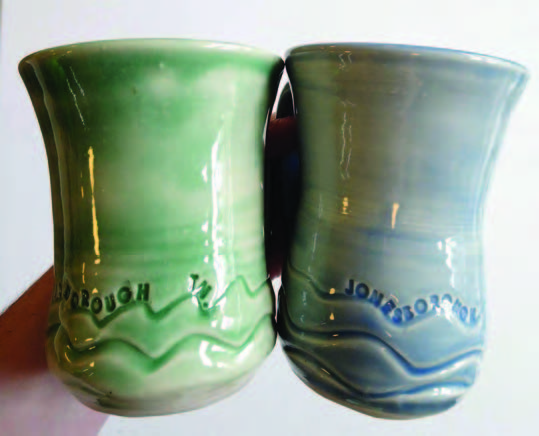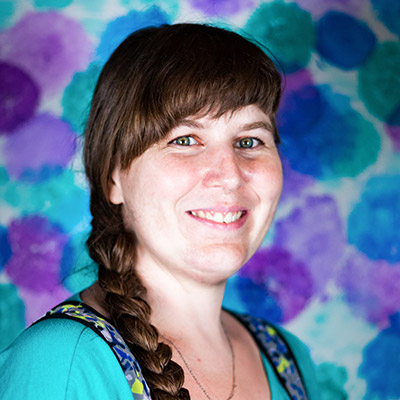Ceramic Mugs
Course Information
In this two-day class you will create up to 5 personalized ceramic mugs. (Two separate classes offered). Each class will have a brief demonstration from instructor and will be followed by open work time. First class will be spent throwing on pottery wheel. Second class will be pulling handles, hand building handles or any additions, decorating and personalizing mugs with stamps or carving techniques, painting and decorating mugs. You will gain a complete knowledge of creating ceramic mugs on a pottery wheel and proper ways to attach handles. Students will also receive a basic understanding of the ceramic process and physical stages of clay. Each participant will have up to 5 completed functional ceramic mugs which will be great for gifts or personal use.

Read More
Movies like Ghost, have given us an impression of throwing clay on a wheel in our collective consciousness but you don’t actually need a wheel for pottery. A good pottery wheel is expensive and can require a lot of space in your house that you may not be ready to devote to a hobby. Before potters had the wheel, they were creating amazing pots and clay forms using only clay, their hands, and a minimum of tools. Today’s classes are a bit more modernized with slab roller, extruders, and stamps, that make constructing pottery much easier. These are all terms and pieces of equipment that you will learn to use during your classes.
Earthen Art is a great first class to begin your pottery adventure. If you are interested in clay, but aren’t sure the wheel is for you, consider hand-building and begin creating wonderful functional pieces of artwork on your very first day. Due to popularity, it is taught by Pam Daniels every fall and spring semester. Please check the most current catalog for specific dates and times. Pam is long-time potter who loves teaching teens and adults the wonders of clay. She is patient and nurturing instructor who makes sure her students are successful. Working in clay is an outlet for creative expression, as well as a gratifying and therapeutic experience. Ceramics have come to be seen as a wellness activity, compared by some to doing yoga or meditation; researchers have found that working with ceramics has health benefits like alleviating symptoms of depression. The class size is small, no more than eight students, which is a great creates a laid-back environment to get to know your fellow students.
The basic techniques that are taught by Pam are easier to learn and the range of forms you can produce is much broader. This class will give you the opportunity to create unique projects each week. Students will focus on the vocabulary of clay, slab construction, pinch pots, surface texture, clay impression and more. For students who are looking for a place to express their creativity, hand-building may be the experience for you. Students will take home decorative and functional pieces such as cups, bowls, wall pockets, etc. You will also have opportunities to make sculptural pieces as well. Students have the opportunity to choose one or two pieces which will be displayed in an end-of-semester exhibition. This event is usually the first Thursday in December for Fall classes or the second Thursday in May for the spring classes.
Class schedules and fees vary each semester. Please review the most current class catalog for specific details and always feel free to call the McKinney Center to discuss what class is best suited for your child.
The registration fee includes the instructor pay, use of approximately 25 pounds of clay, use of glazes, use of tools, and two kiln firings. Clay has to be dry in order to be “fired” twice in a kiln before being ready for use. Due to the thickness of clay it can take several days or weeks for a piece to dry completely. It is important that pieces dry before being placed in the kiln. If moisture is still in the walls of the clay or if the clay has significant bubbles they can explode. After drying, the pieces are placed in the kiln for their first firing which is called a “bisque” firing. This is a two-day process due to the kiln needing to time to heat up, reach its full temperature for a certain period of time, and then it cools down. After the cool down process, the pieces are unloaded and then glazed. After the glazing is complete the clay pieces are loaded again in the kiln and fired to over 2,000 degrees Fahrenheit. This process can take as long as three days due to the temperature max of the kiln. After the kiln cools and is unloaded you will be called to come and pick up your work!
Help your community by fulfilling McKinney Center's mission.
ABOUT THE MCKINNEY CENTER
The McKinney Center at Booker T. Washington School is a multi-use facility providing arts education through Jonesborough's Mary B. Martin Program.


